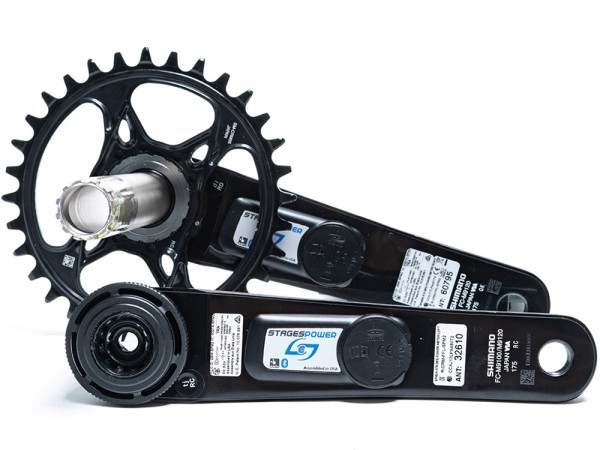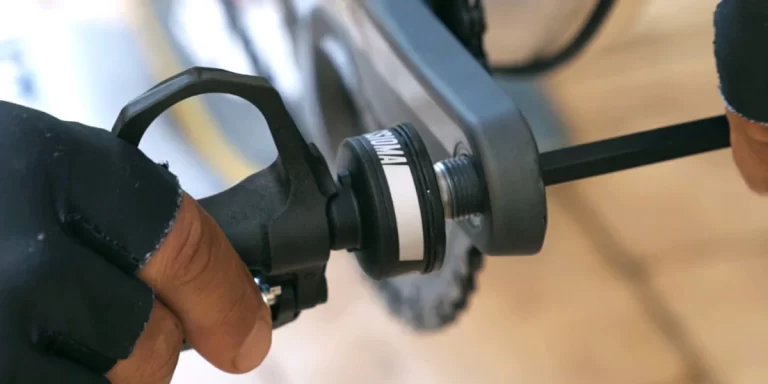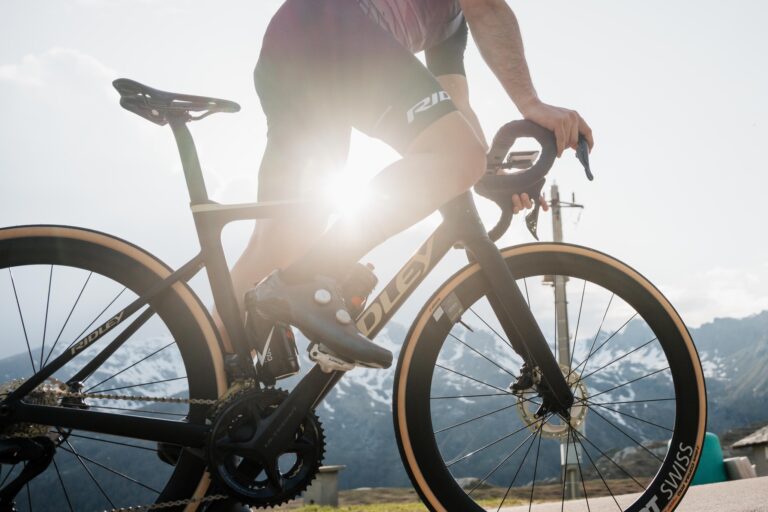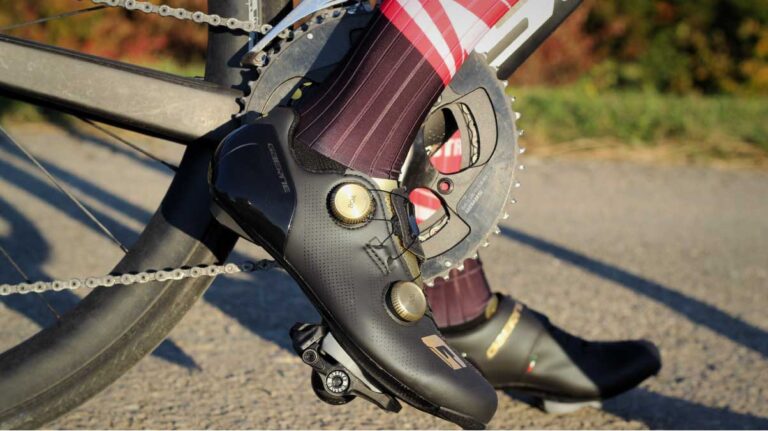Bike Power Meter Buyers Guide

A bike power meter is a sophisticated device that can greatly enhance your cycling experience and performance. By measuring your power output in watts, it provides precise data that allows you to optimize your training, pacing, and overall cycling efficiency. In this comprehensive Bike Power Meter Buyers Guide, we’ll delve into the critical factors and features to help you select the perfect power meter that aligns with your unique cycling needs.
Why Invest in a Bike Power Meter?
A bike power meter offers a multitude of advantages for cyclists across all skill levels:
Accurate Training Data: Power meters provide precise measurements of your effort, enabling you to train with specificity and monitor your progress over time accurately.
Performance Enhancement: Real-time data on your power output empowers you to fine-tune your training zones, pacing strategies, and race tactics, ultimately leading to improved cycling performance.
Efficient Training: Power meters facilitate efficient training by allowing you to target specific power zones, ensuring that your workouts are not only effective but also time-efficient.
Objective Measurement: Unlike metrics such as heart rate or perceived effort, power output remains unaffected by external factors like temperature or fatigue, making it a highly reliable and objective metric for assessing your cycling fitness.
Choosing the Right Bike Power Meter
When selecting a bike power meter, it’s crucial to consider the following factors in meticulous detail:
Power Meter Type
There are several types of power meters available, each with its own set of advantages and considerations:
- Crank-Based: These power meters are integrated into the crankset and measure power directly at the point where force is applied. They provide exceptionally accurate and consistent data but may necessitate professional installation.
- Pedal-Based: Pedal-based power meters attach to the pedals, offering straightforward installation. They provide portability and compatibility with multiple bikes, making them a versatile choice.
- Hub-Based: These power meters are built into the rear wheel hub. While less common, they can be a convenient option if you have a compatible wheelset and prioritize ease of use.
- Spider/Chainring-Based: These power meters are incorporated into the crank spider or chainrings. They offer precise data and may be a suitable choice if you intend to replace your existing crankset.
Compatibility
Ensure that the power meter is fully compatible with your bike’s drivetrain, frame, bottom bracket, and other components. Additionally, verify that it is compatible with your preferred cycling computer, smartphone app, or smartwatch for seamless data analysis.
Accuracy
Precision is paramount. Seek a power meter that provides high accuracy and consistency, typically within a range of +/- 1-2%. This level of precision is adequate for most cyclists and ensures that your data remains reliable.
Battery Life
Examine the power meter’s battery life. Some models employ replaceable coin cell batteries, while others feature rechargeable batteries. Longer battery life is desirable, particularly for extended rides or races.
Connectivity
Ensure that the power meter offers both Bluetooth and ANT+ connectivity options. This versatility allows you to effortlessly pair it with your cycling computer, smartphone, or smartwatch, simplifying data analysis and sharing.
Data Metrics
Scrutinize the data metrics provided by the power meter. Beyond measuring power (in watts), look for features such as cadence, left-right balance, torque effectiveness, and pedal smoothness. These additional metrics offer deeper insights into your cycling performance.
Installation
Consider the ease of installation. While some power meters can be installed by the user, others may necessitate professional installation. Ensure that you are comfortable with the installation process, or seek professional assistance if required.
Budget
Establish a budget based on your cycling objectives and specific requirements. Recognize that a quality power meter represents a long-term investment in your cycling performance, and allocate your budget accordingly.
Maintenance
Evaluate the maintenance requirements of the power meter. Some models may necessitate periodic calibration or firmware updates to ensure accuracy. Be prepared to commit to the necessary maintenance to keep your power meter functioning optimally.
Conclusion
A bike power meter is an invaluable tool that has the potential to propel your cycling performance to new heights. By meticulously selecting the right power meter based on your precise needs, compatibility with your equipment, budget considerations, and personal preferences, you can unlock your potential as a more efficient and powerful cyclist. Invest in a power meter that harmonizes with your riding style, and harness the precise data it offers to fine-tune your training, set new goals, and achieve new heights in your cycling journey. John
Click here to find the best bike power meters rated and ranked
How do I choose a power meter?
Choosing the right power meter requires careful consideration of several factors to ensure it meets your specific needs and preferences. Here’s a step-by-step guide to help you choose a power meter:
Determine Your Cycling Goals: Start by identifying your cycling objectives. Are you aiming to improve your performance, monitor your training progress, or simply enhance your cycling experience?
Budget: Determine your budget. Power meters come in a wide price range, so understanding your financial constraints will help narrow down your options.
Power Meter Type: Consider which type of power meter best suits your needs:
- Crank-Based: These power meters are integrated into the crankset. They offer high accuracy and consistency but may require professional installation.
- Pedal-Based: Pedal-based power meters attach to the pedals, offering portability and compatibility with multiple bikes. They are relatively easy to install.
- Hub-Based: Hub-based power meters are built into the rear wheel hub. They are less common but provide a straightforward installation process.
- Spider/Chainring-Based: These power meters are integrated into the crank spider or chainrings and can be a suitable choice if you plan to replace your existing crankset.
Compatibility: Ensure that the power meter is compatible with your bike’s components, including the drivetrain, frame, and bottom bracket. Also, check if it’s compatible with your preferred cycling computer or smartphone app for data analysis.
Accuracy: Look for a power meter that provides high accuracy, typically within a range of +/- 1-2%. This level of precision ensures reliable data.
Battery Life: Examine the power meter’s battery life. Some models use replaceable coin cell batteries, while others have rechargeable batteries. Longer battery life is preferable, especially for longer rides.
Connectivity: Ensure that the power meter offers both Bluetooth and ANT+ connectivity options. This dual compatibility allows you to connect it to various devices such as cycling computers, smartphones, and smartwatches.
Data Metrics: Scrutinize the data metrics provided by the power meter. In addition to measuring power (in watts), consider whether it offers features like cadence, left-right balance, torque effectiveness, and pedal smoothness. These additional metrics can provide deeper insights into your performance.
Installation: Consider the ease of installation. Some power meters can be installed by the user, while others may require professional installation. Ensure that you are comfortable with the installation process or seek professional assistance if needed.
Maintenance: Evaluate the maintenance requirements of the power meter. Some models may need periodic calibration or firmware updates to maintain accuracy. Be prepared to commit to the necessary maintenance.
Reviews and Recommendations: Research and read reviews from cyclists who have used the power meter models you’re considering. Real-world experiences and feedback can provide valuable insights.
Brand Reputation: Consider the reputation of the power meter manufacturer. Established brands with a history of reliability and customer support may offer a more reassuring choice.
Warranty and Support: Check the warranty offered by the manufacturer and the availability of customer support. A solid warranty can provide peace of mind in case of any issues.
Demo or Test Rides: If possible, try to test the power meter before purchasing it. Some manufacturers or bike shops offer demo units or test ride opportunities to help you evaluate the product.
Final Decision: Based on your research and considerations, make an informed decision that aligns with your cycling goals, equipment compatibility, budget, and personal preferences.
Choosing the right power meter is a significant investment in your cycling journey. By taking the time to assess your needs and carefully evaluate the available options, you can select a power meter that enhances your training, improves your performance, and enriches your overall cycling experience.
Is it worth buying a power meter for cycling?
Determining whether it’s worth buying a power meter for cycling depends on your specific goals, budget, and commitment to improving your cycling performance. Here are some factors to consider when deciding if a power meter is worth the investment:
Training Goals:
- A power meter can be extremely valuable if you have specific training goals and want to take your cycling performance to the next level. It provides precise data on your power output, allowing you to train in specific power zones and track your progress over time.
Data-Driven Training:
- If you’re serious about data-driven training, a power meter is an essential tool. It offers objective and consistent measurements, unlike metrics like heart rate or perceived effort, which can be influenced by external factors.
Racing and Competing:
- If you’re a competitive cyclist or plan to participate in races or time trials, a power meter can help you pace yourself effectively and make strategic decisions during races. It’s a valuable tool for optimizing race performance.
Analyzing Performance:
- If you’re interested in analyzing your cycling performance and identifying areas for improvement, a power meter provides a wealth of data that can help you make informed adjustments to your training regimen.
Motivation and Accountability:
- Some cyclists find that using a power meter adds a level of motivation and accountability to their training. Setting power-based goals and tracking progress can be inspiring and help you stay committed to your training plan.
Budget Considerations:
- Power meters come in a range of prices, and some can be a significant investment. Consider your budget and how much you’re willing to spend on a power meter. There are options available to fit various budgets, including pedal-based, crank-based, and hub-based power meters.
Compatibility:
- Ensure that the power meter you choose is compatible with your bike’s components and your preferred cycling computer or smartphone app for data analysis.
Commitment to Training:
- A power meter is most valuable when used consistently as part of a structured training plan. If you’re committed to training regularly and using the data to guide your workouts, it can be a worthwhile investment.
Learning Curve:
- Using a power meter effectively may require some learning and adjustment to your training approach. Be prepared to educate yourself on power-based training principles or seek guidance from a coach.
In summary, a power meter can be a valuable tool for cyclists looking to improve their performance, track progress, and train with precision. However, it’s an investment that should align with your goals and commitment to cycling. If you’re unsure, you might consider borrowing or renting a power meter to see if it fits your training style before making a purchase. Ultimately, the decision should be based on your individual cycling aspirations and needs.
What is the most accurate measure of power output when riding a bike?
The most accurate measure of power output when riding a bike is typically obtained using a reliable and well-calibrated power meter. Power meters are specialized devices designed to measure the power you generate while cycling in watts. They offer a highly accurate and objective measurement of your effort, making them the gold standard for assessing your power output.
There are several types of power meters available, including crank-based, pedal-based, hub-based, and spider/chainring-based power meters. When properly installed and calibrated, these power meters can provide consistent and precise measurements of your power output within a range of +/- 1-2% accuracy.
In contrast, other common metrics used by cyclists, such as heart rate and perceived effort, have limitations:
- Heart Rate: Heart rate can be influenced by various external factors, including temperature, hydration, and fatigue. It may not provide a direct measure of the work you’re doing on the bike.
- Perceived Effort: Perceived effort is subjective and can vary from person to person. It’s influenced by factors like motivation and mental state, making it less reliable for precise measurement.
While heart rate and perceived effort can be valuable tools for monitoring your training, they may not provide the same level of accuracy and objectivity as a power meter when it comes to measuring the actual work (in watts) you’re producing during a ride.
If you’re serious about training, performance improvement, or racing, a power meter is an excellent investment. It allows you to train with specificity, track progress, and make data-driven decisions to optimize your cycling performance. Additionally, power meters are widely used in professional cycling and are considered the standard for assessing and comparing athletes’ abilities.
Do you really need a dual sided power meter?
Whether you need a dual-sided power meter (measuring power independently from both legs) depends on your specific cycling goals, budget, and the level of detail you require for your training and analysis. Here are some considerations to help you decide:
Bike Power Meter Buyers Guide-Advantages of Dual-Sided Power Meters:
Balance and Symmetry: Dual-sided power meters provide data on the power output of both your left and right legs independently. This information can help you assess and improve your pedal stroke symmetry and identify any imbalances or weaknesses.
Precision in Data Analysis: If you’re focused on optimizing your pedal stroke, addressing muscular imbalances, or recovering from an injury, a dual-sided power meter can offer more precise insights into how each leg contributes to your overall power output.
Training Zones: Dual-sided power meters can be particularly beneficial if you engage in highly structured training with specific power zones and wattage targets for each leg. This level of granularity allows for fine-tuning your workouts.
Considerations Against Dual-Sided Power Meters:
Cost: Dual-sided power meters tend to be more expensive than their single-sided counterparts. If cost is a significant concern, you may need to weigh the benefits against your budget.
Practicality: For many cyclists, single-sided power meters (measuring power from one leg and doubling it) provide sufficient data accuracy and insights for their training goals. They are often more practical and cost-effective.
Training Goals: If your training goals don’t require a deep dive into pedal stroke analysis or addressing leg imbalances, a single-sided power meter may meet your needs adequately.
Bike Power Meter Buyers Guide-Who Might Benefit from Dual-Sided Power Meters:
- Competitive cyclists and triathletes looking for every possible advantage to improve performance and efficiency.
- Cyclists recovering from injuries who want to closely monitor and address any muscle imbalances.
- Athletes engaged in highly specialized training, such as sprinters or time trialists, who require precise power distribution data.
Bike Power Meter Buyers Guide-Who Might Not Need Dual-Sided Power Meters:
- Recreational cyclists who are more focused on general fitness, enjoyable rides, and occasional group rides.
- Those on a limited budget who want to gain the benefits of power-based training without the added expense.
- Cyclists whose training doesn’t require a detailed analysis of leg balance and pedal stroke.
In summary, while dual-sided power meters offer valuable insights into pedal stroke symmetry and can be beneficial for certain cyclists, they are not a necessity for everyone. Single-sided power meters can provide accurate data for most training goals and are often more budget-friendly. Your choice should align with your specific needs, budget, and training objectives.





